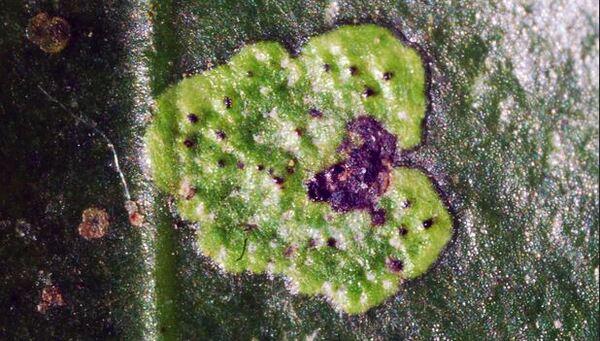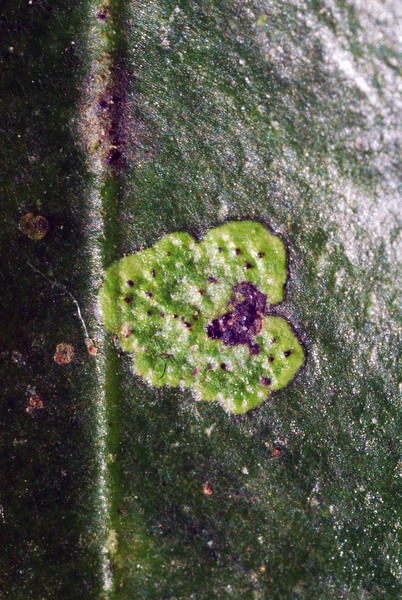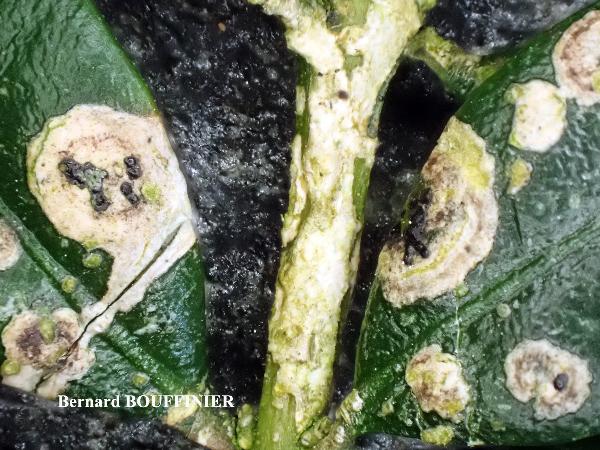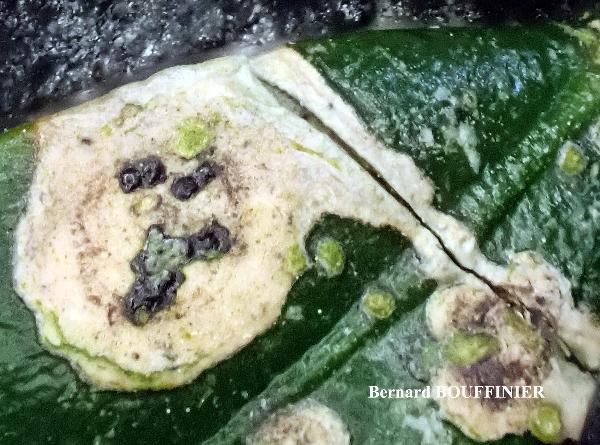Strigula buxi Chodat
in Nahas, Etude biologique sur le Phoma buxi et le Strigula buxi: 50, 1933.
Synonyms: Strigula elegans auct. eur. non (Fée) Müll. Arg.; Strigula smaragdula auct. eur. non Fr.
Distribution: S - Camp (Puntillo & al. 2000, Puntillo 2000, Nimis & Tretiach 2004, Roux & Sérusiaux 2004, Sérusiaux & Diederich 2005).
Description: Thallus crustose, subcuticular on leaves, forming orbicular or elongated patches measuring 1.5-3 x 3-6 mm, with wavy to lobulate margins, pale green or yellowish green, slightly shiny, the peripheral, dead parts whitish. Perithecia brown to brown-black, 0.3-0.35 mm across, almost entirely covered by a thalline layer, the apical part visible. Involucrellum brown, 15-25 µm thick, covering the upper part of the perithecium; exciple 25-30 µm thick, colourless except in the uppermost part which is fused with the involucrellum; abundant algal cells present between the involucrellum and the exciple; hamathecium of 1-1.5 µm thick paraphysoids which are mostly simple, sparingly branched and anastomosing only where adjacent to exciple. Asci 8-spored, narrowly clavate, bitunicate-fissitunicate, shortly stalked at base, the apex thickened into a tholus, with a narrow ocular chamber, I-. Ascospores 1-septate, hyaline, fusiform, (11.5-)13-16(-17) x 3.5-5.5 µm. Pycnidia often 30-80 µm wide, usually numerous, almost entirely immersed in the thallus, the apical part black, the rest colourless; macroconidia 9-13 x 2-3.5 µm, with 10-16 µm long mucous appendages, subapically inserted on the conidiogenous cell. Photobiont trentepohlioid (Cephaleuros). Spot tests: thallus K-, C-, KC-, P-. Chemistry: thallus without lichen substances. Note: a foliicolous subcuticular, Atlantic-Macaronesian species, also known from the Pyrenees and western France. The only Italian station is from a warm-humid coastal gorge hosting several rare lichens with subtropical affinities. It is included as “Critically Endangered” in the Italian red list of epiphytic lichens (Nascimbene & al. 2013c).
Growth form: Crustose
Substrata: leaves
Photobiont: Trentepohlia
Reproductive strategy: mainly sexual
Restricted to humid-warm, oceanic areas
Commonnes-rarity: (info)
Alpine belt: absent
Subalpine belt: absent
Oromediterranean belt: absent
Montane belt: absent
Submediterranean belt: absent
Padanian area: absent
Humid submediterranean belt: absent
Humid mediterranean belt: extremely rare
Dry mediterranean belt: absent
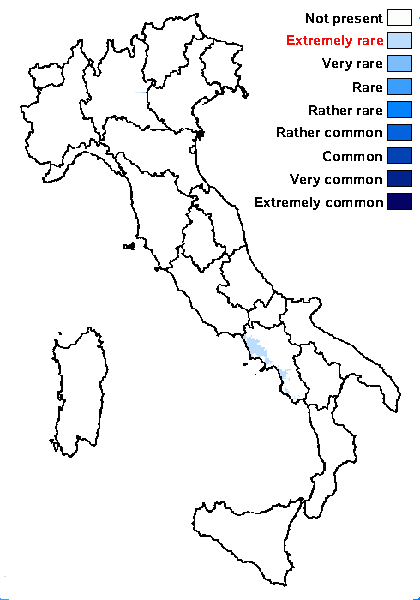
Predictive model
Herbarium samples
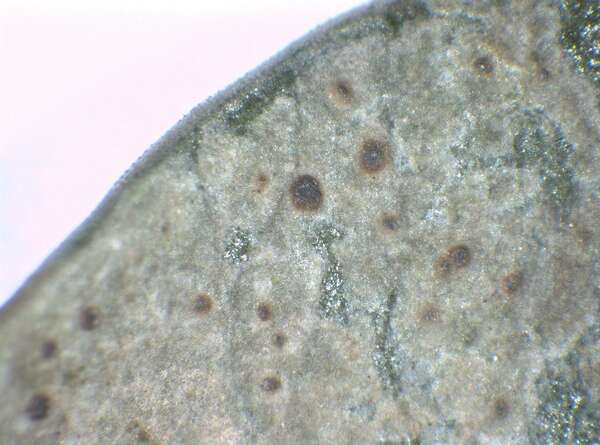

P.L. Nimis; Owner: Department of Life Sciences, University of Trieste
Herbarium: TSB (31887)
2003/03/17
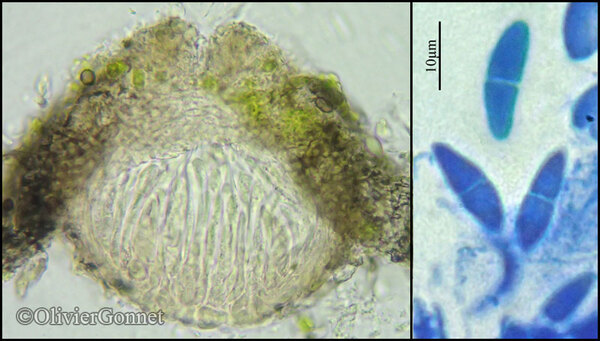
Courtesy Danièle et Olivier Gonnet - Source: https://www.afl-lichenologie.fr/Photos_AFL/Photos_AFL_S/Strigula_buxi.htm
France, session AFL 2015 dans le Lot
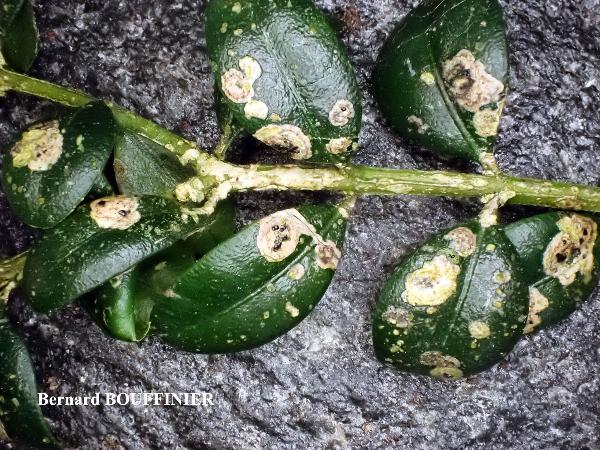
Bernard Bouffinier - Source: http://www.lichensmaritimes.org/index.php?task=fiche&lichen=1155&lang=en
France, Le Faou
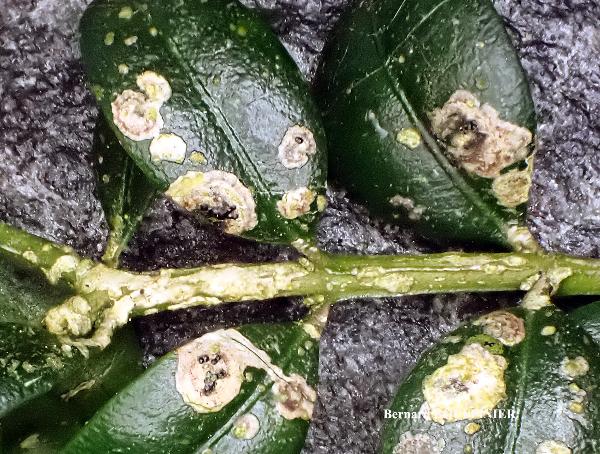
Bernard Bouffinier - Source: http://www.lichensmaritimes.org/index.php?task=fiche&lichen=1155&lang=en
France, Le Faou

Bernard Bouffinier - Source: http://www.lichensmaritimes.org/index.php?task=fiche&lichen=1155&lang=en
France, Le Faou
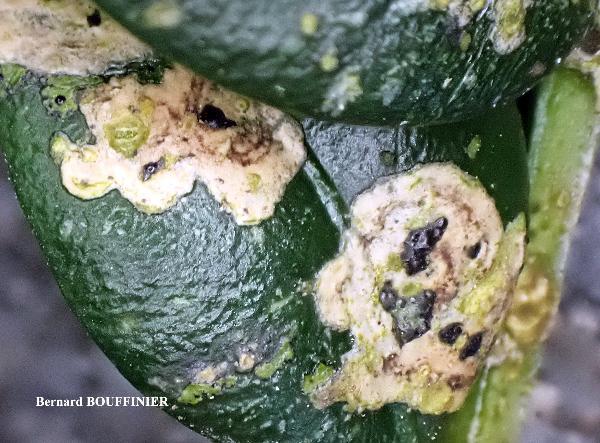
Bernard Bouffinier - Source: http://www.lichensmaritimes.org/index.php?task=fiche&lichen=1155&lang=en
France, Le Faou
Growth form: Crustose
Substrata: leaves
Photobiont: Trentepohlia
Reproductive strategy: mainly sexual
Restricted to humid-warm, oceanic areas
Commonnes-rarity: (info)
Alpine belt: absent
Subalpine belt: absent
Oromediterranean belt: absent
Montane belt: absent
Submediterranean belt: absent
Padanian area: absent
Humid submediterranean belt: absent
Humid mediterranean belt: extremely rare
Dry mediterranean belt: absent

Predictive model
| Herbarium samples |


P.L. Nimis; Owner: Department of Life Sciences, University of Trieste
Herbarium: TSB (31887)
2003/03/17

Courtesy Danièle et Olivier Gonnet - Source: https://www.afl-lichenologie.fr/Photos_AFL/Photos_AFL_S/Strigula_buxi.htm
France, session AFL 2015 dans le Lot

Bernard Bouffinier - Source: http://www.lichensmaritimes.org/index.php?task=fiche&lichen=1155&lang=en
France, Le Faou

Bernard Bouffinier - Source: http://www.lichensmaritimes.org/index.php?task=fiche&lichen=1155&lang=en
France, Le Faou

Bernard Bouffinier - Source: http://www.lichensmaritimes.org/index.php?task=fiche&lichen=1155&lang=en
France, Le Faou

 INDEX FUNGORUM
INDEX FUNGORUM
 GBIF
GBIF
